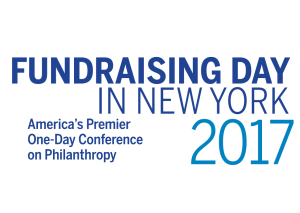When it comes to finding upscale donors, what they are reading doesn’t necessarily disqualify them from giving to an organization. Take the case of Cigar Aficionado readers who were a huge hit for a national cardio-pulmonary group. There’s also the case of Playboy’s subscriber file being a winner for a straight-laced art institute where most of those portrayed have the clothes on.
It’s just that in many cases, neither side wants to talk about the seemingly unusual connections. When you think about them, though, they do make sense. They have some synergy, affluence and the need to tap into it. Of the more than 30 titles published by Time Inc., the ones used the most by fundraisers are Fortune, Time, Money, Sunset and Real Simple, said Christine Slusarek, executive director, list management for Time Con- sumer Marketing Inc. She said that 30 or more fundraisers use each of those lists. The types of potential donors segments are what makes them appealing, Slusarek said, such as the high demographics, while the selects that fundraisers use are generally donor select, income, net worth and sometimes a geographic selection by state or ZIP code.
“Donor lists tend to work best for other nonprofits,” said Lauri Simone, senior vice president for May Development Services, a division of Direct Media, Inc. in Greenwich, Conn. Golfers also seem to work well for nonprofits, she said, perhaps because they “tend to be more charity minded,” and golf outings are popular fundraising events for nonprofits.
It was a health charity client of Simone’s that used Cigar Aficionado. The charity doesn’t want to talk about it, but the results were unexpectedly good. And, there’s a large veterans charity, whose donors are predominantly white females who are of a certain seniority. The National Enquirer’s list has worked well for them.
St. Jude Children’s Research Hospital rents lists that reflect its donor database of primarily females ages 65 and older, said Emily Farrell, manager of acquisitions programs at the Memphis, Tenn.-based charity. Women’s and parenting magazines seem to work for acquiring new donors, she said.
Among the successful titles mentioned by nonprofits and list companies in those categories were Child, Parenting, and American Baby.
“It’s important to know the demographics of your donor database and to test lists that fit your demographic,” Farrell said. “If a list doesn’t work the first time you shouldn’t give up on it…sometimes a simple segment change, like adding gender or age, will make the list really perform for you.”
She explained that the organization does “a lot of list testing before we roll out,” first with a mailing of 15,000, then a second phase of 55,000. The rollout eventually starts at 2.5 million pieces and its largest is 12 million, she said. The organization has selects on all of the lists, including recency, household income and age.
InStyle, a magazine targeted toward younger women, has been working well for general health appeals, and regional publications continue to work, said Lisa Greene, president and CEO of Specialized Fundraising Services in Spartanburg, S.C.
Two regional publications cited as good fundraising lists were Sunset, a lifestyle magazine covering 13 Western states, and Southern Living.
Most regional subscribers are highly educated and a more affluent audience, said Lenny Medico, senior vice president, list management, at Lake Group Media in Rye, N.Y. “A lot of regionals just work well for the state or local causes where they’re trying to find an audience that’s affluent and responsive to causes of that area,” he said.
Though the top magazine titles might differ depending on the client, Greene said some of the strongest publications for her nonprofit clients include Country Home, More (“celebrating women over 40”), Family Circle, Cottage Living, Self (women’s health) and Smithsonian, which Medico also cited. Good Housekeeping and Red Book work well for breast cancer groups, she said.
“For one national health agency, USA Today works great,” Greene said, “and Vanity Fair works really well for them too, oddly enough.”
The success of a list can depend on what the organization is looking to get from a mailing, said Patrick Frame, senior vice president at List Services Corp., Fundraising in Bethel, Conn. Larger mailers are sometimes more interested in quantity of names, while smaller nonprofits might need a higher performance threshold. “Some organizations are looking to push response rate. Average gift is not as important,” he said.
The Alzheimer’s Association does not rent its file, so most of its lists are acquired by exchange only, said Bob Beatty, director of direct marketing. The Chicago-based nonprofit rents Forbes and the Wall Street Journal, and while the response rates are low, he said, the average gifts those lists produce tend to be very high.
Debbie McLain, senior vice president and director of nonprofit brokerage for RMI Direct in Danbury, Conn., said it’s becoming common for commercial mailers to exchange lists with fundraisers. “Commercial mailers are finding that fundraising lists will work for them,” she said.
McLain, who works with about three dozen clients, mostly health-related fund-raisers but also humanitarian, senior issue advocacy and environmental fundraisers, cited titles such as Arthritis Self-Management, Kiplinger’s Retirement, Consumer Reports and Time.
Nonprofit mailers are having recent good results with Meredith Corporation, Reader’s Digest Association and Rodale, according to Brittany Bean-Perry, senior vice president of the data management division at Princeton, N.J.-based American List Counsel.
Among the titles she described as “proven performers for nonprofits” are Reader’s Digest titles, Better Homes and Gardens, and Ladies’ Home Journal, along with Prevention, Men’s Health and Runner’s World, among others.
“They are bringing large volumes of Direct Mail Sold/Direct To Publisher names to market which makes them very responsive to mailers. Since they have such large universes they also offer robust change of address hotlines,” Bean-Perry said. “This is particularly attractive to the nonprofits with label offers. Since the universes are in the millions, niche segments still offer generous universes.” NPT










